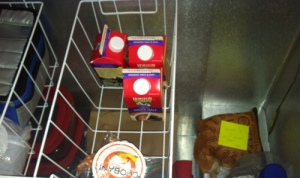I went to a community meeting that was held to explain how to intelligently dispute the proposed nuclear waste repository near Lake Huron in Ontario. The speakers were all very calm, rational and well-informed. I did learn much about the OPG project in Kincardine, and more generally about the problem of nuclear waste. It’s a very hot topic locally as we’re a community heavily invested in our water resources and most of us are desperate to protect them.
The setting for the meeting struck me as very ironic. We gathered at the public library in a small town in the Blue Water area. It was a beautiful summer evening, temperatures in the low 70’s with a light breeze and low humidity. The library windows were all closed. I don’t even know if the windows there are operable. We don’t construct and manage buildings anymore with windows that open and people inside in touch with what’s going on outside. The air conditioning was blasting. The speakers needed to project their voices to rise above the fan noise, even though we were in a relatively small space. I wished I had brought a sweater or jacket, though I’m often the one who’s complaining of being too warm. It was nearly impossible to see the images projected on the screen because it was still bright daylight outside, the windows in the meeting room were not shaded, and all of the lights were on in the room.
Where do people think power comes from? Why do they object to housing low and intermediate level waste from power generation but do not object to blatant over-consumption of power? It’s all part of the same system. People, you and I, we demand cheap reliable energy. We, the people, in fact abuse the energy systems much of our lifestyles depend on because we’re simply unaware that we’re doing so.
Families, children, individuals, communities and organizations must develop their sustainability literacy. School kids and adults should be taught where energy comes from and how much it costs. Everyone should learn how we are devastating the environment, which will ultimately devastate our economy and our society, in the name of cheap energy, goods and services. The best way to enable change is through learning. Your hometown library would be a great place to start!










